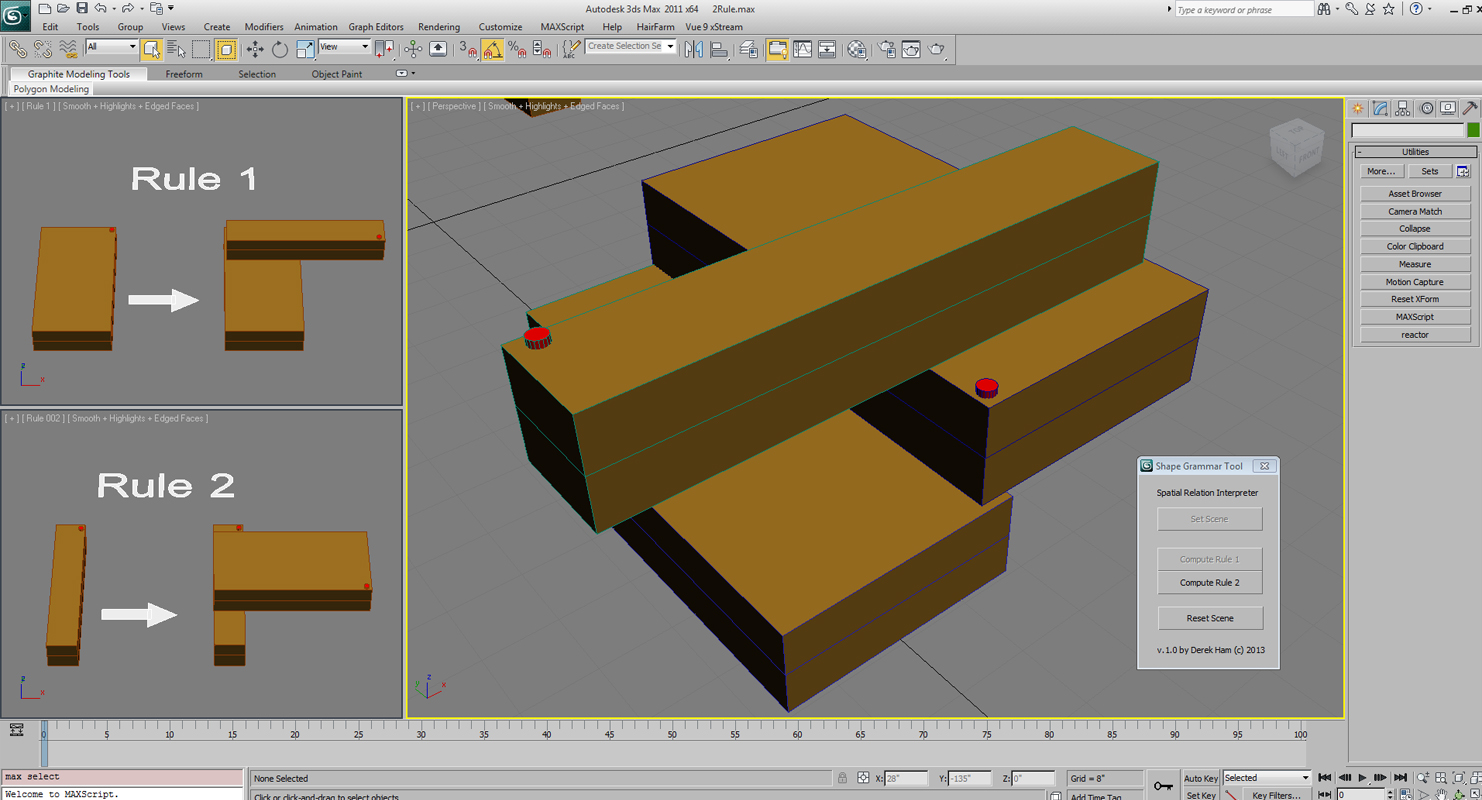3D Shape Grammar Interpreter
Posted on 13 April 2013

When a designer works within a specific grammar system defined by a discreet set of rules, we see the playful gamification of the design process.
An early example of design "play" through Shape Grammars can be seen in the Kindergarten Grammars developed by Stiny (1980). The kindergarten grammars are an extension to the Froebel building gifts made popular by architects such as Frank Lloyd Wright. Within this system, shape grammars work with a kit of parts that serve as the vocabulary, and a system of configurations that together make the language of the design (Stiny, 1980). Just as in all gameplay, it is the constraints of the system that brings forth the play element and with it creativity. While the kindergarten grammars are combinatory in nature, they represent just one instance of the ludic offerings of shape grammars. When shape grammars go beyond combinatory systems, we can go beyond “0” dimensional elements to allow for more “play moves” that include embedding and shape emergence.
The Tool
Using the scripting language of Autodesk’s 3D Studio Max, I’ve developed a tool that allows students to explore basic Shape Grammar’s in the same way students play with the kit of parts. The MaxScript allows the designer to explore spatial relationships between any two geometries constructed in the 3D Studio Max modeling environment. By establishing the initial spatial relationship, and the label position the script will process, calculate and place the next successive geometry as programmed by the designer’s first gesture. The results from the tool result in interesting and complex forms based on simple rules.
Although the shapes created with the tool are combinatory with the dimensionality of 0, the tool is great for designers to initially learn about shape grammar, spatial relationships, and recursion. While these things are traditionally introduced to students with physical hand exercises, the 3DS Max Shaper tool allows for the generation of forms that could not be done with physical blocks. Shapes can penetrate each other and suspend in mid air, feats that could not be made possible with wooden blocks.

